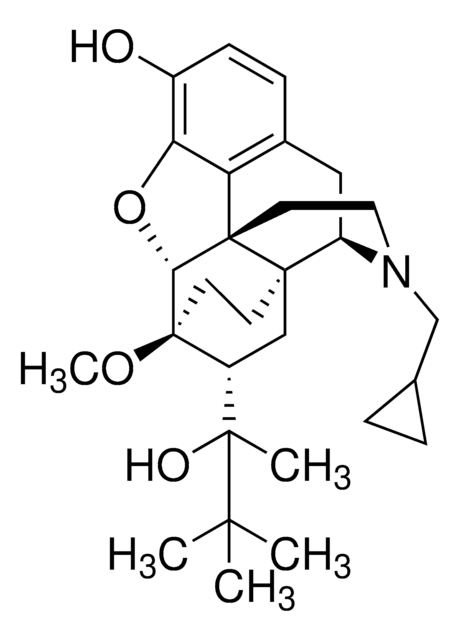02870
Etanolo
ACS reagent, prima fine spirit, without additive, F15 o1
Sinonimo/i:
Alcol etilico
About This Item
Prodotti consigliati
Grado
ACS reagent
Densità del vapore
1.59 (vs air)
1.59 (vs air)
Tensione di vapore
44.6 mmHg ( 20 °C)
44.6 mmHg
Stato
liquid
Temp. autoaccensione
683 °F
Qualità
prima fine spirit, without additive, F15 o1
Durata
~7 yr
Limite di esplosione
19 %, 60 °F
19 %
Disponibilità
available only in Switzerland
dilution
(for analytical testing)
Impurezze
≤0.001% aldehyde (as CH3CHO)
≤0.001% formaldehyde (HCHO)
≤0.001% ketone (as CH3COCH3)
≤0.002% free acid (as CH3COOH)
≤0.2% methanol (CH3OH)
Residuo dopo evaporazione
≤0.001%
Colore
clear
Indice di rifrazione
n20/D 1.3600 (lit.)
pH
7.0 (20 °C, 10 g/L)
P. ebollizione
78 °C (lit.)
78 °C
Punto di fusione
-114 °C
−114 °C (lit.)
Solubilità
water: soluble (completely)
Cationi in tracce
Al: ≤0.5 mg/kg
Ba: ≤0.1 mg/kg
Bi: ≤0.1 mg/kg
Ca: ≤0.5 mg/kg
Cd: ≤0.05 mg/kg
Co: ≤0.02 mg/kg
Cr: ≤0.02 mg/kg
Cu: ≤0.1 mg/kg
Fe: ≤0.1 mg/kg
K: ≤0.5 mg/kg
Li: ≤0.1 mg/kg
Mg: ≤0.1 mg/kg
Mn: ≤0.02 mg/kg
Mo: ≤0.1 mg/kg
Na: ≤1 mg/kg
Ni: ≤0.02 mg/kg
Pb: ≤0.1 mg/kg
Sr: ≤0.1 mg/kg
Zn: ≤0.1 mg/kg
Stringa SMILE
CCO
CCO
Formato
neat
InChI
1S/C2H6O/c1-2-3/h3H,2H2,1H3
LFQSCWFLJHTTHZ-UHFFFAOYSA-N
Cerchi prodotti simili? Visita Guida al confronto tra prodotti
Categorie correlate
Applicazioni
- Poly(sulfobetaine) versus poly(ethylene glycol) based copolymer modified polyurethane catheters for antifouling: This study examines the use of ethanol in the synthesis of polymers designed to reduce biological fouling on medical devices, highlighting its role in advanced healthcare materials research (Cao et al., 2024).
- Green synthesis of polyimide by using an ethanol solvothermal method for aqueous zinc batteries: Ethanol is used as a green solvent in the innovative synthesis of polyimide structures, emphasizing its importance in sustainable material production and energy storage solutions (Zhao et al., 2024).
- Modulation of gut microbiota with probiotics as a strategy to counteract endogenous and exogenous neurotoxicity: Research explores the indirect applications of ethanol in the solvent extraction processes used for studying neuroprotective strategies in medical research (Skalny et al., 2024).
- Superselective Ablative Chemo-ethanol Embolization for Recurrent Single Hepatocellular Carcinoma: A Six-Month Outcome Analysis: This clinical study utilizes ethanol directly in therapeutic interventions, demonstrating its critical use in oncological treatments to improve patient outcomes (Lee et al., 2024).
- Self-Assembly Reinforced Alginate Fibers for Enhanced Strength, Toughness, and Bone Regeneration: Ethanol is employed in the processing of novel biomaterials designed for medical applications, showcasing its utility in the development of regenerative medicine technologies (Cui et al., 2024).
Altre note
The article number 02870-6X1L-F will be discontinued. Please order the single bottle 02870-1L-F which is physically identical with the same exact specifications.
The article number 02890-4X2.5L-F will be discontinued. Please order the single bottle 02890-2.5L-F which is physically identical with the same exact specifications.
Nota a piè di pagina
Esclusione di responsabilità
greener alternative product
Avvertenze
Danger
Indicazioni di pericolo
Consigli di prudenza
Classi di pericolo
Eye Irrit. 2 - Flam. Liq. 2
Codice della classe di stoccaggio
3 - Flammable liquids
Classe di pericolosità dell'acqua (WGK)
WGK 1
Punto d’infiammabilità (°F)
55.4 °F - closed cup
Punto d’infiammabilità (°C)
13 °C - closed cup
Scegli una delle versioni più recenti:
Possiedi già questo prodotto?
I documenti relativi ai prodotti acquistati recentemente sono disponibili nell’Archivio dei documenti.
I clienti hanno visto anche
Il team dei nostri ricercatori vanta grande esperienza in tutte le aree della ricerca quali Life Science, scienza dei materiali, sintesi chimica, cromatografia, discipline analitiche, ecc..
Contatta l'Assistenza Tecnica.








